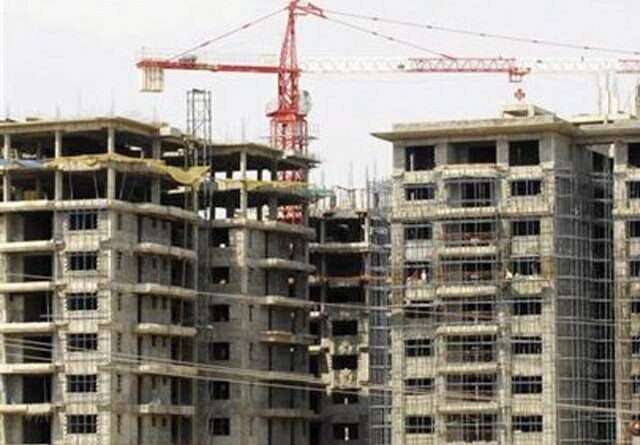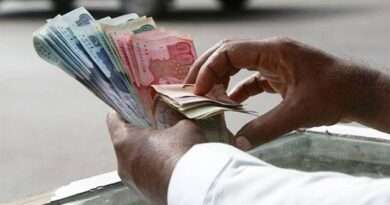No Recovery in Sight for Realty Sector: Challenges and Potential in Pakistan’s Real Estate Market
|
Getting your Trinity Audio player ready...
|
Introduction
Lahore: Pakistan’s real estate sector, once a beacon of investment opportunities, has faced a prolonged period of stagnation. Despite its potential for quick and substantial returns, the market struggles to recover. This article explores the current state of the real estate market in Pakistan, highlighting both challenges and opportunities.
Current Market Scenario
Stagnation and Pessimism
The real estate sector in Pakistan has been experiencing stagnation for several years. Market players are increasingly pessimistic, seeing no significant recovery on the horizon. Despite this, real estate remains one of the most attractive investment options for local and overseas investors, owing to its potential for rapid and abnormal returns.
Varying Market Dynamics
The situation varies across different regions of Pakistan. According to Wassem Tariq, a Lahore-based realtor, the market in 2024 is navigating through a stagnation phase after years of abnormal price hikes. These hikes were driven by a combination of policy decisions, overseas investments, and changing demand patterns.
Price Trends in Key Locations
Karachi
In Karachi, prices in Defence Housing Authority (DHA) and Bahria Town show varied trends. Plots range from Rs25 million to Rs100 million, depending on location and size. While there is some stability, speculative volatility persists due to oversupply in certain areas and insufficient infrastructure development in others.
Lahore
In Lahore, different phases of DHA have seen stability. One-kanal plots are priced between Rs20 million and Rs35 million. Stakeholders note that prices have stabilized over the past year, especially in Lahore and Islamabad, unlike Karachi, which continues to face challenges.
Islamabad
Real estate in DHA Islamabad and other prominent societies commands a price premium, with one-kanal plots averaging between Rs30 million and Rs50 million.
Economic and Political Influences
Impact of Overseas Investments
Over the past decade, remittances from overseas Pakistanis have played a pivotal role in driving real estate demand. Their investments, primarily for rental yields and property appreciation, have often inflated prices beyond the reach of average local buyers. During the 2021-22 boom, prices in key urban centers surged 30-40%, largely due to this influx of capital.
Regulatory and Policy Challenges
Unchecked inflows and limited regulatory oversight have created bubbles in the market, particularly in metropolitan areas. Inflation, declining purchasing power, and stringent government policies for undocumented money have contributed to the market’s stagnation.
Future Prospects
Potential for Recovery
Realtors like Ahmad Raza, based in the UAE, believe that the market slowdown is temporary. If the government introduces policies to boost construction activity and reduce taxes on property transactions, investor confidence could be renewed. Experts predict a modest recovery in the coming months, particularly in affordable housing and rental properties.
Need for Comprehensive Reforms
Pakistan’s real estate sector requires comprehensive reforms to ensure sustainable growth. Ahmad Aziz Subhani, a UAE-based economist, suggests measures to curb speculative buying, incentivize low-cost housing, and regulate overseas investments. Consistent policies, affordable financing options, and infrastructure development are crucial for restoring market balance.
Impact of Amnesty Schemes
Amnesty schemes introduced by previous governments have been instrumental in driving real estate and construction growth. The 2020 package, which allowed investment in construction projects without disclosing sources of income, brought significant liquidity to the market. However, these schemes also contributed to speculative buying, inflating prices.
Conclusion
The real estate sector in Pakistan faces significant challenges, but there is potential for recovery. Comprehensive reforms, consistent policies, and targeted incentives can help restore investor confidence and ensure sustainable growth. By addressing speculative buying and promoting affordable housing, Pakistan can unlock the full potential of its real estate market.
FAQs
What is causing the stagnation in Pakistan’s real estate market?
The stagnation is caused by a combination of factors, including inflation, declining purchasing power, stringent government policies for undocumented money, and speculative volatility in certain areas.
How have overseas investments affected the real estate market?
Overseas investments have played a significant role in driving demand, particularly for rental yields and property appreciation. However, unchecked inflows and limited regulatory oversight have also created market bubbles.
What are the current price trends in key locations?
In Karachi, plots in DHA and Bahria Town range from Rs25 million to Rs100 million. In Lahore, one-kanal plots in different phases of DHA are priced between Rs20 million and Rs35 million. In Islamabad, one-kanal plots in DHA and other prominent societies average between Rs30 million and Rs50 million.
What measures are needed for the market to recover?
Comprehensive reforms, consistent policies, affordable financing options, and infrastructure development are crucial. Measures to curb speculative buying, incentivize low-cost housing, and regulate overseas investments are also necessary.
How have amnesty schemes impacted the real estate market?
Amnesty schemes have brought significant liquidity to the market and spurred growth in the construction industry. However, they have also contributed to speculative buying, inflating prices.
ALSO READ:
https://skipper.pk/2024/11/24/hajj-body-planned-for-private-sector-in-pakistan/




